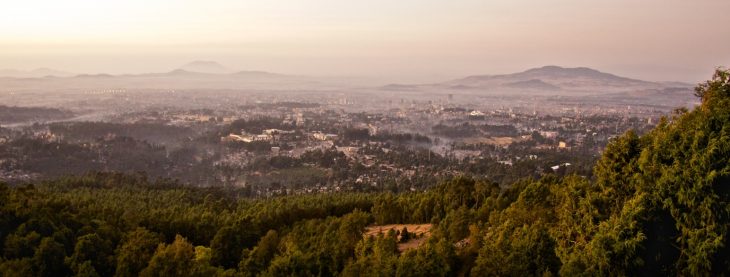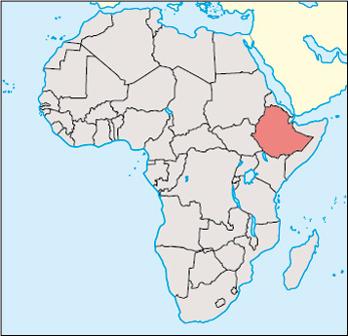What is the Capital of Ethiopia? Addis Ababa

Capital City of Ethiopia: Addis Ababa
City Overview
Addis Ababa, the capital and largest city of Ethiopia, is a vibrant and dynamic metropolis located in the central part of the country. Established in 1886 by Emperor Menelik II, Addis Ababa, meaning “new flower” in Amharic, quickly became the political, economic, and cultural heart of Ethiopia. It is situated at an altitude of about 2,355 meters (7,726 feet) above sea level, making it one of the highest capital cities in the world.
Addis Ababa’s growth is closely tied to Ethiopia’s history. The city was founded in the late 19th century when Menelik II, the then ruler, selected the area for its favorable climate and strategic location. Over the years, it has expanded from a small town to a bustling city with a population of over 5 million people (2023 estimate). It is not only the administrative and political capital of Ethiopia but also serves as the headquarters of the African Union (AU), giving it a significant role in continental diplomacy and international relations.
The city’s landscape is dominated by hills and valleys, and its location near the foothills of the Entoto Mountains offers stunning views of the surrounding areas. Addis Ababa is home to many important institutions, including government buildings, international organizations, universities, and cultural centers. As a melting pot of Ethiopia’s diverse cultures, languages, and traditions, Addis Ababa offers a fascinating mix of the old and new, where traditional Ethiopian culture blends seamlessly with modern developments.
Key Facts about Addis Ababa:
- Area: 530 square kilometers (205 square miles)
- Population: Approximately 5.5 million (2023 estimate)
- Time Zone: East Africa Time (EAT), UTC +3
- Highest Mountain: Mount Ras Dashen (4,550 meters / 14,928 feet) – located in the Simien Mountains, approximately 500 kilometers north of Addis Ababa.
- Longest River: The Blue Nile (Abay River) – flowing from Lake Tana in the northwest, the Blue Nile River is one of the major tributaries of the Nile River.
Addis Ababa is also the main hub for transportation, with Bole International Airport serving as the busiest airport in East Africa. The city is characterized by a combination of Ethiopian Orthodox Christian heritage, Islamic influences, and diverse ethnic groups, making it a city rich in history, tradition, and culture.
Major Landmarks in Addis Ababa
- The National Palace (Former Imperial Palace)
The National Palace, also known as the Palace of Menelik II, was the residence of Ethiopia’s emperors, including Emperor Haile Selassie, who ruled from 1930 until the 1974 revolution. Today, the palace houses the offices of the president of Ethiopia. While the building is not open to the public, it remains an important historical landmark. - The African Union Headquarters
Addis Ababa serves as the diplomatic capital of Africa, being home to the African Union (AU) headquarters. This grand building is a symbol of Africa’s unity and independence. The AU is an important institution that brings together African leaders to discuss economic, political, and social issues across the continent. - Addis Ababa University
Established in 1950, Addis Ababa University is the oldest and largest university in Ethiopia. It is a major educational institution and a hub for research in Africa, known for its contribution to Ethiopia’s academic and intellectual development. The university campus includes the Institute of Ethiopian Studies (IES), which houses a significant collection of Ethiopian manuscripts and artifacts. - Holy Trinity Cathedral
The Holy Trinity Cathedral is one of the most important religious sites in Ethiopia, serving as the burial place for many of Ethiopia’s emperors, including Haile Selassie I. The cathedral’s stunning architecture and rich history make it a must-visit site for anyone interested in Ethiopian Orthodox Christianity. - The Ethnological Museum
The Ethnological Museum is located on the campus of Addis Ababa University and offers visitors an in-depth look at Ethiopia’s diverse cultures and ethnic groups. The museum’s collections of art, costumes, and historical artifacts highlight the country’s heritage and traditions. - Mount Entoto
Situated just outside the city, Mount Entoto provides visitors with a breathtaking view of Addis Ababa. It is also historically significant as the location where Menelik II established his palace before moving to Addis Ababa. The area is now a popular destination for nature lovers and hikers. - Mercato
As one of the largest open-air markets in Africa, Mercato is a sprawling marketplace in Addis Ababa, offering a wide variety of goods, from spices and textiles to household items and local crafts. It’s an essential experience for those wanting to immerse themselves in the vibrant, bustling atmosphere of the city.
Climate Overview
Addis Ababa experiences a tropical highland climate, characterized by mild temperatures year-round due to its elevation. The city has distinct wet and dry seasons, with the wet season typically lasting from June to September. During this period, the city experiences heavy rains and occasional thunderstorms. The dry season spans from October to May, with cooler temperatures in the months of December to February.
| Month | Average Temperature (°C) | Average Precipitation (mm) | Avg Sunny Days |
|---|---|---|---|
| January | 15 | 20 | 10 |
| February | 16 | 10 | 10 |
| March | 18 | 30 | 9 |
| April | 19 | 70 | 8 |
| May | 20 | 90 | 7 |
| June | 19 | 110 | 4 |
| July | 19 | 180 | 3 |
| August | 19 | 170 | 4 |
| September | 19 | 130 | 6 |
| October | 19 | 30 | 9 |
| November | 18 | 20 | 10 |
| December | 17 | 10 | 10 |
Other Cities That Served as Capital in Ethiopia’s History
1. Axum (Before 900 AD)
Axum was the capital of the ancient Aksumite Empire, one of the great civilizations of antiquity. The city served as a major center of trade, culture, and religion, with a rich legacy that includes the Aksum Obelisks and the Church of St. Mary of Zion. Axum is considered the birthplace of Christianity in Ethiopia, and its historical significance is immense.
2. Lalibela (12th to 13th century)
During the reign of King Lalibela in the 12th and 13th centuries, Lalibela became the political and spiritual capital of Ethiopia. The city is famous for its rock-hewn churches, which are still major pilgrimage sites for Ethiopian Orthodox Christians.
3. Gondar (1632–1855)
Gondar served as the capital of Ethiopia from the 17th century until the mid-19th century. The city is home to a UNESCO World Heritage site known as the Royal Enclosure, which contains a series of castles built by Ethiopian emperors. Gondar was an important political and military center during its time as the capital.
Country Facts
Ethiopia is a landlocked country in the Horn of Africa, bordered by Eritrea, Djibouti, Somalia, Kenya, South Sudan, and Sudan. It is one of the oldest nations in the world, with a history that dates back thousands of years. Ethiopia is unique in that it has never been colonized, maintaining its independence throughout history, except for a brief Italian occupation from 1936 to 1941. The country is home to a diverse range of cultures, languages, and religions, with over 80 ethnic groups and many different languages spoken.
- Population: Approximately 120 million (2023 estimate)
- Area: 1,104,300 square kilometers (426,400 square miles)
- Largest City: Addis Ababa
- Currency: Ethiopian Birr (ETB)
- Official Language: Amharic
- ISO Country Code: ET
- Timezone: East Africa Time (EAT), UTC +3
Ethiopia is known for its diverse landscapes, ranging from vast highlands and plateaus to lowland deserts. The country is also famous for its ancient history, including the Kingdom of Aksum and the development of Ethiopian Christianity. Ethiopia’s culture is rich in music, dance, art, and cuisine, with injera (a sourdough flatbread) and doro wat (spicy chicken stew) being iconic dishes. Ethiopia’s economy is primarily based on agriculture, with coffee being one of the most important exports. The capital, Addis Ababa, continues to serve as a focal point for diplomacy, development, and cultural exchange in the region.














































